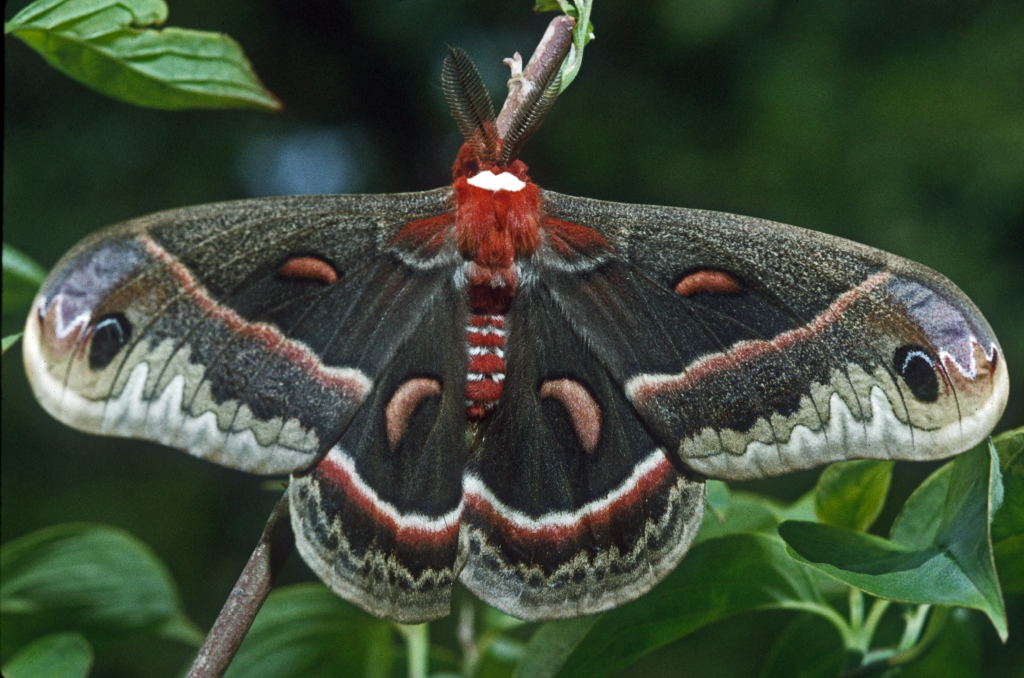When the sun sets and darkness envelops our world, a remarkable transformation takes place in gardens, forests, and even our homes. The familiar daytime insects retreat, and a whole different cast of characters emerges to take center stage. These nocturnal insects have evolved specialized adaptations that allow them to thrive in the darkness, hunting, pollinating, and living their lives while most of us sleep. Far from being simply “bugs that come out at night,” these creatures represent a fascinating ecological community with unique behaviors and survival strategies that differ dramatically from their daytime counterparts. Let’s pull back the curtain on this hidden world and explore the secret nightlife of insects that only emerge after dark.
The Evolutionary Advantages of Nocturnal Living
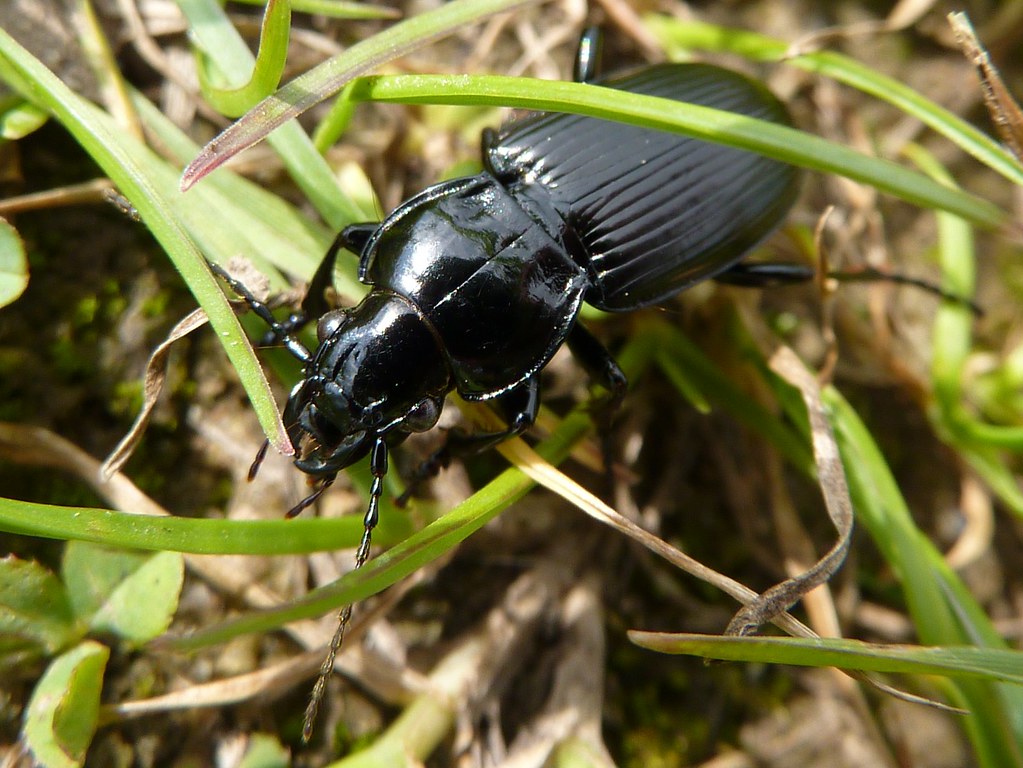
Nocturnal insects have evolved to exploit the nighttime environment for several key advantages. Perhaps most importantly, darkness offers protection from many predators that rely on sight to hunt, giving night-active insects a significant survival edge. The reduced competition for resources is another benefit, as nocturnal insects can access food sources that might be heavily contested during daylight hours. Additionally, nighttime typically brings cooler temperatures and higher humidity, conditions that help prevent dehydration in small-bodied creatures. For desert-dwelling species especially, nocturnal activity allows them to avoid the potentially lethal daytime heat. These evolutionary advantages have led to the development of specialized sensory systems that allow these insects to navigate and hunt effectively in low-light conditions.
Moths: The Night’s Silent Pollinators
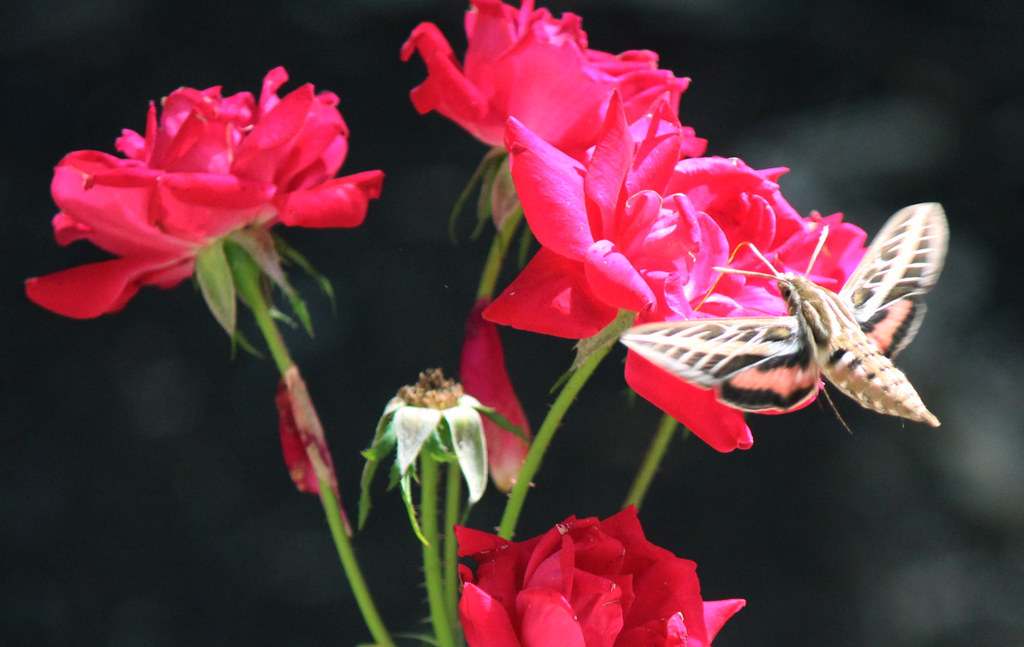
While butterflies get much of the attention as daytime pollinators, their nocturnal cousins—moths—play an equally crucial role in plant reproduction. Many night-blooming plants have co-evolved with moths, developing white or pale-colored flowers that stand out in moonlight and emit strong fragrances to attract these nocturnal visitors. The sphinx moth, with its remarkable hovering ability similar to hummingbirds, is especially efficient at pollinating flowers with deep nectar tubes. Some moth species, like the yucca moth, have such specialized relationships with certain plants that neither can survive without the other. The night-flying luna moth, with its spectacular green wings spanning up to 4.5 inches, may capture our imagination with its beauty, but its ecological importance as a pollinator often goes unrecognized.
Fireflies: Nature’s Living Light Show
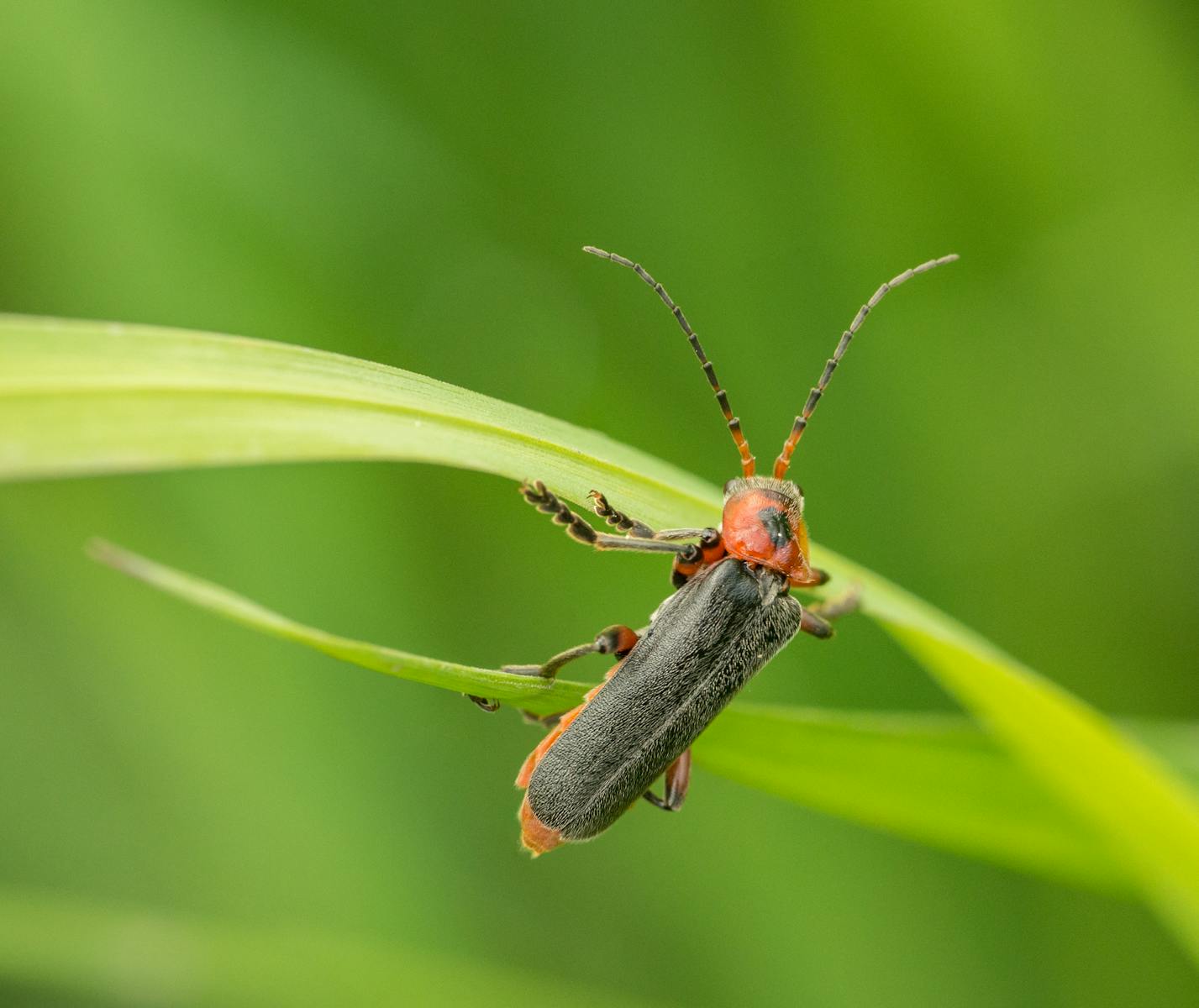
Perhaps the most beloved of nocturnal insects, fireflies (or lightning bugs) transform summer evenings into magical light displays with their bioluminescent signals. These beetles produce light through a chemical reaction in specialized abdominal organs, where the compound luciferin interacts with oxygen, the enzyme luciferase, and ATP to create the characteristic glow. Each firefly species has its own distinct flash pattern, serving as a language for finding mates in the darkness—males flash while flying, while females respond from perches on vegetation. Some female fireflies of the genus Photuris have evolved to mimic the flash patterns of other species, luring in males which they then capture and eat. Despite their charm and ecological importance as predators of garden pests, firefly populations are declining worldwide due to light pollution, habitat loss, and pesticide use.
Crickets and Katydids: The Night’s Symphony
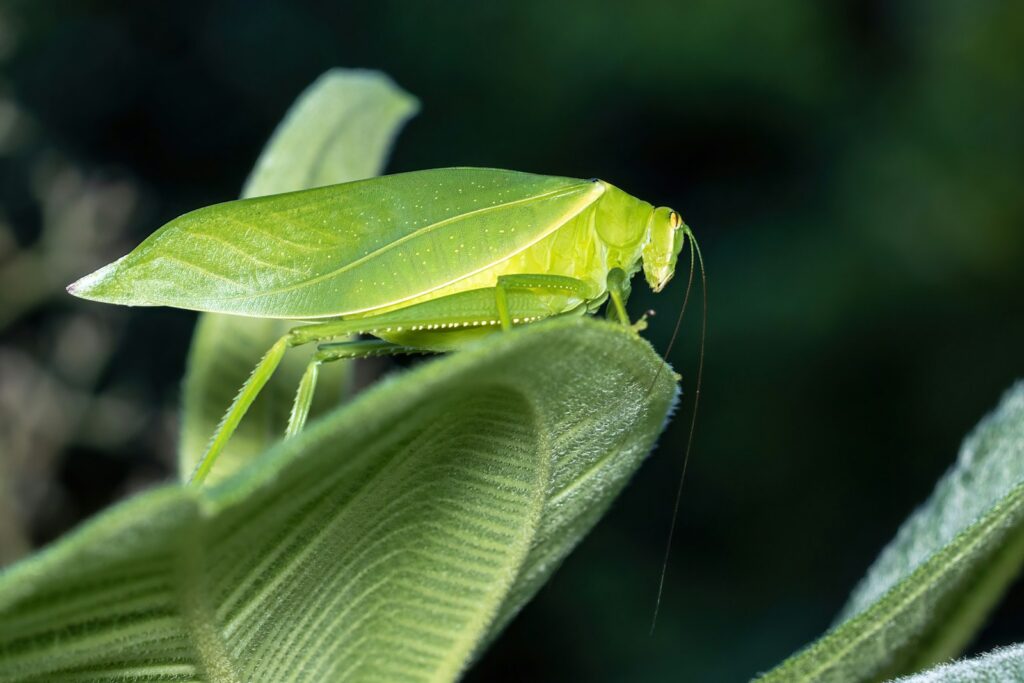
The soundtrack of summer nights comes largely from male crickets and katydids producing their distinctive calls by rubbing specialized structures on their wings together—a process called stridulation. Each species has its own unique song, with some katydids producing sounds reaching 100 decibels, comparable to a chainsaw. These night singers are actually communicating to attract females and establish territory, with their call rates increasing or decreasing depending on temperature—so reliable that you can estimate the temperature by counting cricket chirps using formulas like Dolbear’s Law. While daytime insects often rely on visual signals for communication, these nocturnal musicians have evolved sophisticated acoustic systems that allow them to find mates in complete darkness. Interestingly, cricket ears are located on their front legs, allowing them to precisely determine the direction of sounds.
Mosquitoes: Notorious Nighttime Feeders

Many mosquito species are crepuscular or nocturnal, becoming most active during dawn, dusk, or nighttime hours when their human and animal hosts are less likely to notice and swat them. Female mosquitoes, which are the ones that bite, are guided to their victims by a combination of carbon dioxide detection, body heat, and chemical attractants produced in sweat. The Anopheles mosquito, primary vector of malaria, is predominantly nocturnal, typically feeding between dusk and dawn when people are sleeping and most vulnerable. Mosquitoes have adapted to night feeding through highly sensitive olfactory receptors that can detect carbon dioxide from up to 50 meters away and thermoreceptors that can locate warm-blooded animals in complete darkness. Their distinctive high-pitched whine, which many people find maddening when trying to sleep, is actually the sound of their wings beating up to 600 times per second.
Giant Water Bugs: Formidable Nocturnal Predators
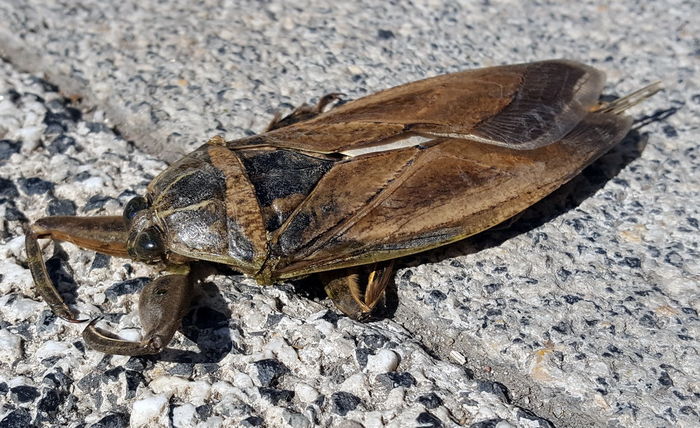
Among the most fearsome nocturnal insect predators are giant water bugs, members of the family Belostomatidae, sometimes called “toe-biters” or electric light bugs because they’re attracted to artificial lights during their nighttime flights. These impressive insects can reach over 4 inches in length and employ powerful front legs to capture prey including small fish, amphibians, snakes, and other invertebrates. Giant water bugs inject digestive enzymes into their prey through a pointed beak, liquefying the internal tissues before sucking them out. In some species, males carry the fertilized eggs on their backs until they hatch, protecting them from predators. Despite their intimidating appearance and painful bite (which they can deliver to humans if handled carelessly), these nocturnal hunters play valuable roles in aquatic ecosystems by controlling populations of other organisms.
Luna Moths: The Ephemeral Night Flyers
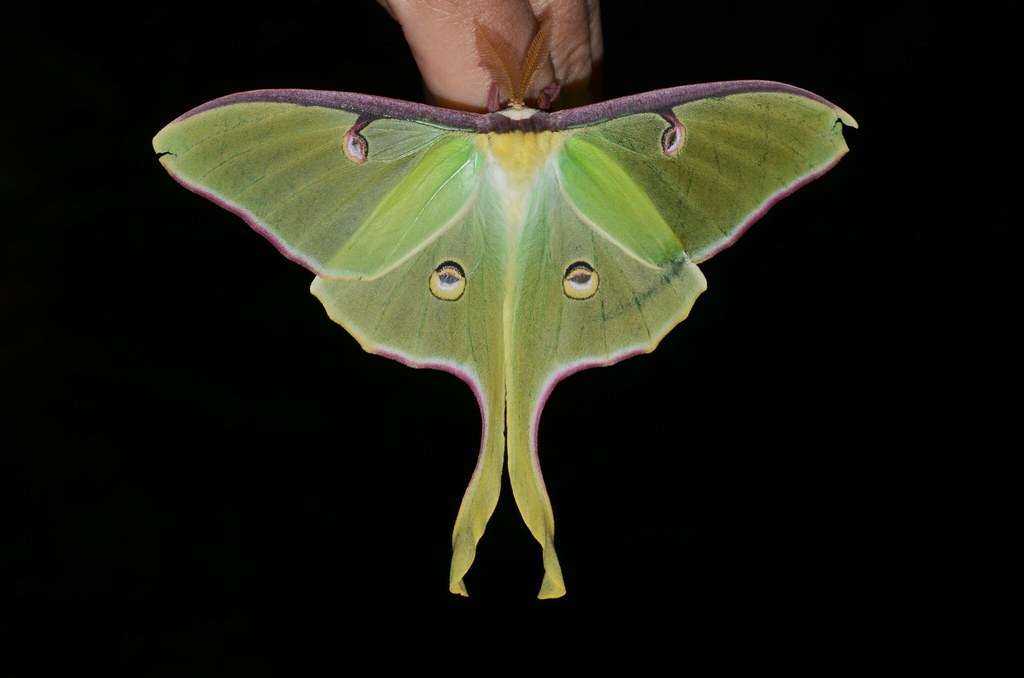
With their spectacular pale green wings spanning up to 4.5 inches and long, graceful tails, luna moths epitomize the ethereal beauty of nocturnal insects. These members of the giant silk moth family emerge from their cocoons without mouths or digestive systems, existing solely to mate during their brief 7-10 day adult lifespan. Females release powerful pheromones that male luna moths can detect from miles away using their large, feathery antennae, which contain thousands of scent receptors. After mating, females lay up to 200 eggs on the leaves of host trees including walnut, hickory, and sweet gum. Luna moths fly only at night, remaining hidden on tree trunks during daylight hours, where their green coloration provides excellent camouflage. Their distinctive wing tails are thought to confuse the echolocation systems of predatory bats, directing attacks away from their vulnerable bodies.
Scorpions and Pseudoscorpions: Arachnids of the Night
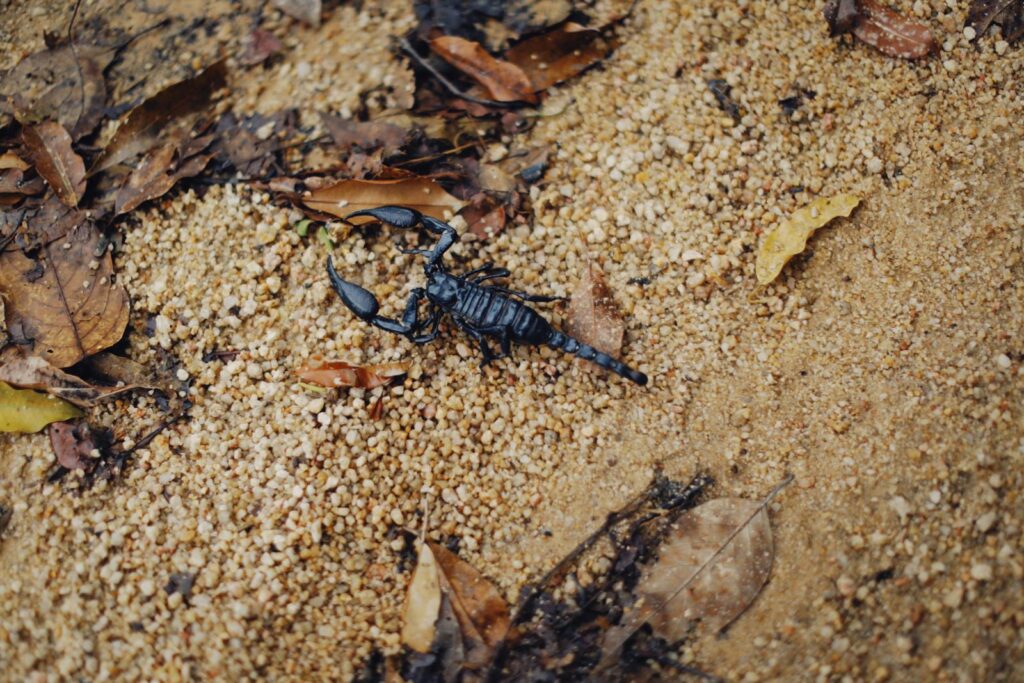
While not insects but arachnids, scorpions are fascinating nocturnal arthropods that hunt primarily at night using specialized sensory organs. Most species have evolved to detect the slightest vibrations through specialized organs in their legs called basitarsal compound slit sensilla, allowing them to locate prey in complete darkness. One of the most remarkable features of scorpions is their fluorescence under ultraviolet light, glowing a brilliant blue-green that helps researchers locate them during nighttime studies. Their lesser-known cousins, pseudoscorpions, are tiny arachnids that resemble scorpions without tails, also primarily hunting at night for small arthropods which they capture with venomous pincers. These miniature predators (typically less than 5mm long) play important roles in controlling populations of mites, springtails, and other small arthropods in leaf litter and soil ecosystems, often going completely unnoticed due to their size and nocturnal habits.
Cockroaches: Masters of Midnight Foraging
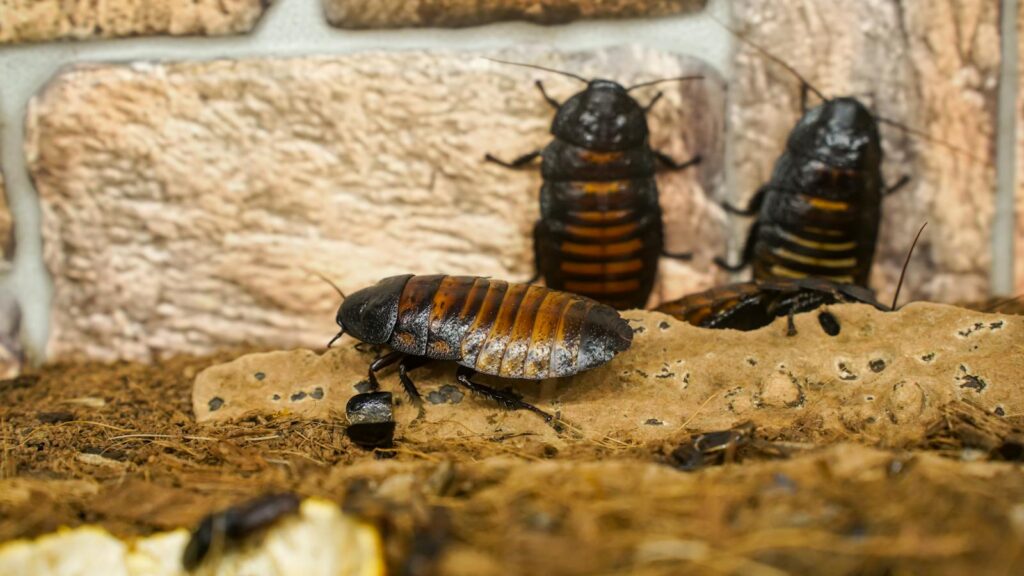
While often reviled as household pests, cockroaches represent some of the most successful nocturnal insects, with evolutionary histories stretching back over 300 million years. These resilient creatures have developed extraordinary sensitivity to light, with even moonlight bright enough to send them scurrying for cover—a behavior known as negative phototaxis that helps them avoid predators. Their bodies are specially designed for nighttime foraging, with long antennae containing thousands of sensory receptors that detect food, potential mates, and danger in complete darkness. Some species, like the American cockroach, can run at speeds up to 3.4 miles per hour (proportionally equivalent to a human running at 210 mph) when startled by sudden light. Most fascinating are their cerci—two appendages at the rear of their bodies that detect air movements as subtle as those produced by a predator’s strike, allowing them to escape in milliseconds before the threat even reaches them.
Cave Crickets: Specialists of Perpetual Darkness
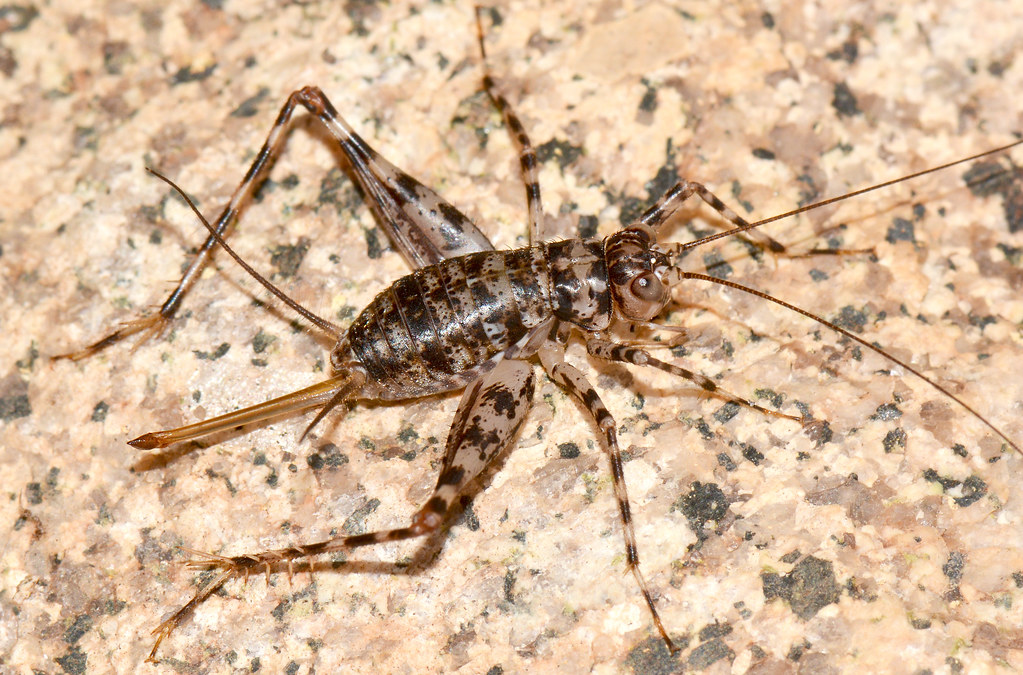
Cave crickets, also known as camel crickets or spider crickets, have evolved to thrive in environments of permanent darkness, from caves to human basements. These peculiar-looking insects possess extraordinarily long antennae and legs, with their antennae often exceeding their body length to help them navigate pitch-black environments through touch rather than sight. Unlike their outdoor relatives, most cave cricket species don’t chirp, as sound-based mating rituals become less advantageous in cave environments where sound travels differently. They’re opportunistic omnivores, feeding on fungi, decaying organic matter, and occasionally scavenging dead insects, fulfilling important roles in breaking down organic material in cave ecosystems. What makes them particularly fascinating is how they’ve adapted to extremely low-food environments by developing efficient metabolisms and the ability to go without food for extended periods—adaptations that serve them well in both natural caves and the dark corners of human dwellings.
Night-flying Beetles: Diverse Nocturnal Specialists
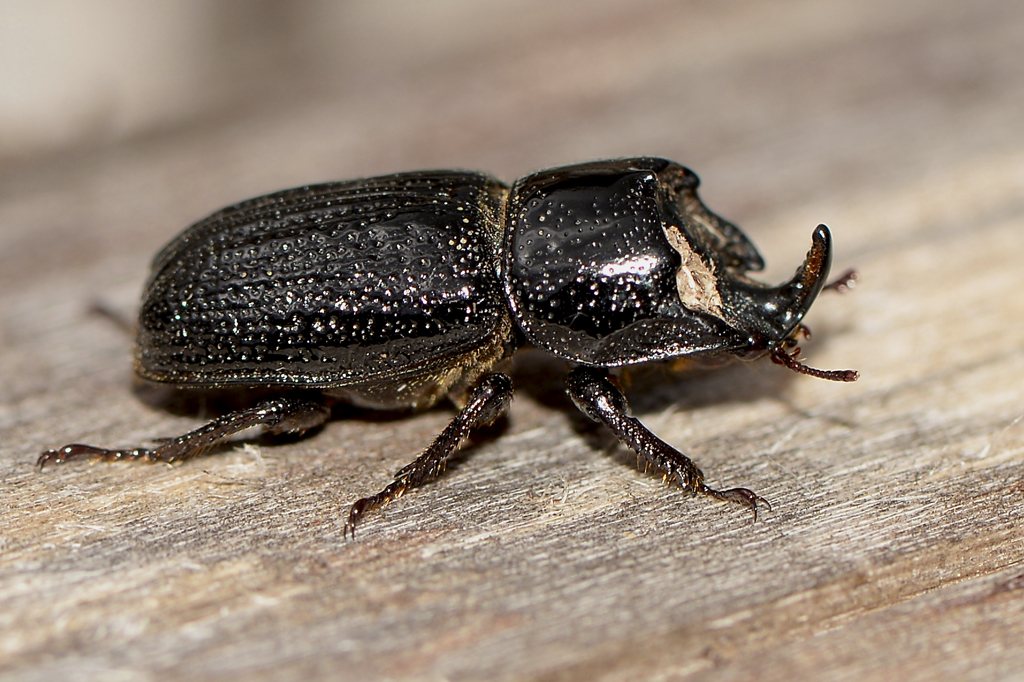
The beetle order Coleoptera contains numerous nocturnal specialists, from the click beetles that can launch themselves into the air with an audible “click” when threatened, to the enormous rhinoceros beetles that are among the strongest creatures on Earth relative to their size. Many night-flying beetles have evolved specialized compound eyes with fewer but larger ommatidia (optical units) than daytime species, allowing greater light sensitivity at the expense of image resolution. Certain species like the Eastern Hercules beetle can detect pheromones from potential mates over remarkable distances in the darkness. Predatory ground beetles become active hunters after sunset, using powerful mandibles and quick movements to capture prey on the forest floor. Perhaps most fascinating are certain click beetle species in the family Elateridae that produce bioluminescence like fireflies, creating blue-green light from specialized organs to attract mates in the darkness—an excellent example of convergent evolution with fireflies developing similar light-producing capabilities independently.
Light Pollution: Threat to Nocturnal Insect Life

The increasing proliferation of artificial lighting is having devastating effects on nocturnal insects, disrupting behaviors that have evolved over millions of years. Moths and other night-flying insects become fixated on artificial lights, circling until exhaustion or falling prey to waiting predators, rather than feeding or reproducing. Light pollution interferes with firefly communication by making their bioluminescent signals harder to detect, directly impacting their ability to find mates and reproduce. Studies have shown that streetlights can reduce local moth populations by up to 60%, with cascading effects throughout ecosystems as these important pollinators and food sources for other animals decline. Even the spectral composition of artificial lighting matters—LED lights with high blue content are particularly disruptive to insect navigation systems that evolved to use moonlight and starlight for orientation. As nocturnal insects decline, we risk losing not only fascinating creatures but also the critical ecosystem services they provide, from pollination to pest control and decomposition.
Observing the Nocturnal Insect World

For those fascinated by nocturnal insects, there are several methods to observe these secretive creatures without disturbing their natural behaviors. A simple approach is blacklighting—hanging a white sheet with an ultraviolet light behind it, which attracts many night-flying insects without harming them. Red-filtered headlamps allow human observation while minimizing disturbance, as most insects cannot see red light or perceive it as much dimmer than other wavelengths. Digital recording devices with infrared capabilities can capture behaviors of insects that might be missed by direct observation, revealing complex interactions that occur in complete darkness. Citizen science projects focused on specific groups like fireflies or moths provide valuable data while connecting observers with these fascinating creatures. When observing, remember that even brief exposure to white light can disrupt insects’ night vision and natural behaviors, making minimal-impact observation techniques essential for truly understanding these creatures on their own terms.
Conclusion
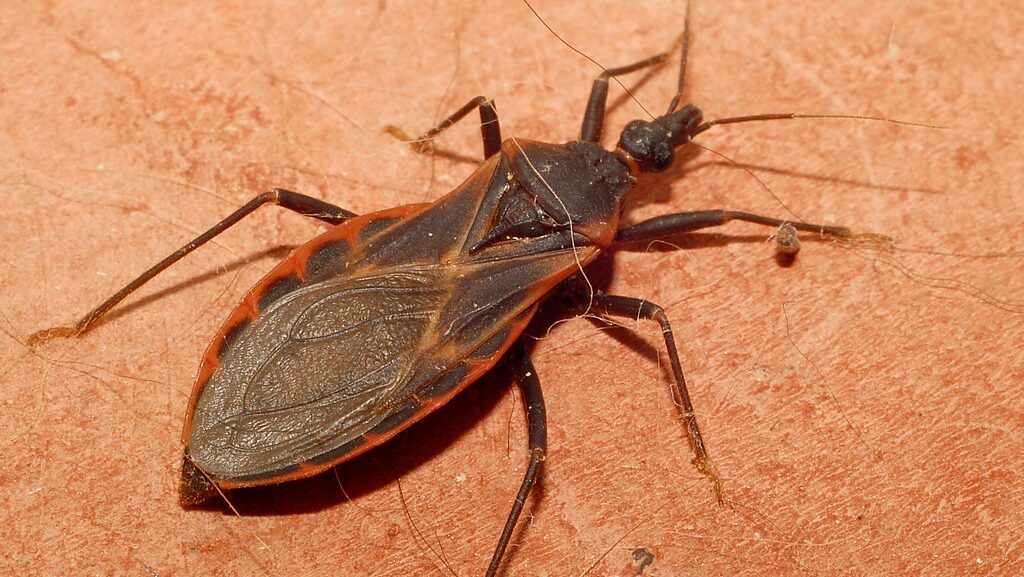
The secret nightlife of insects reveals a world of remarkable adaptations, complex behaviors, and ecological importance that often goes unnoticed as we sleep. From the silent pollination work of moths to the predatory prowess of giant water bugs, these nocturnal species have evolved specialized ways of thriving in darkness. As we continue to expand our understanding of these creatures, we gain not only scientific knowledge but also a deeper appreciation for the intricate web of life that continues its vital work under the cover of night. By protecting dark habitats and reducing light pollution, we can help ensure that these fascinating nocturnal insects continue their essential ecological roles for generations to come.

